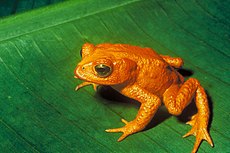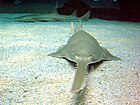Data deficient
| Conservation status | |
|---|---|
 | |
| Extinct | |
| Threatened | |
| Lower Risk | |
Other categories | |
| (list) | |
Related topics | |
 Comparison of Red List classes above and NatureServe status below  | |
A data deficient (DD)
distribution
of the species.
The IUCN recommends that care be taken to avoid classing species as "data deficient" when the absence of records may indicate dangerously low abundance: "If the range of a taxon is suspected to be relatively circumscribed, if a considerable period of time has elapsed since the last record of the taxon, threatened status may well be justified"[1] (see also precautionary principle).
See also
- IUCN Red List data deficient species
- List of data deficient amphibians
- IUCN Red List data deficient species (Annelida)
- List of data deficient arthropods
- List of data deficient birds
- IUCN Red List data deficient species (Cnidaria)
- List of data deficient fishes
- List of data deficient insects
- List of data deficient invertebrates
- List of data deficient mammals
- List of data deficient molluscs
- List of data deficient plants
- List of data deficient reptiles
References
- ^ "The Categories", in IUCN (1983).
External links
- IUCN (2001). "2001 Categories & Criteria (version 3.1)". 2014 IUCN Red List. Retrieved 2014-08-26.



